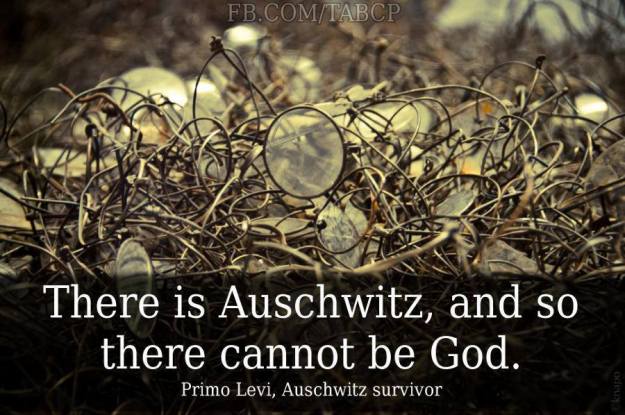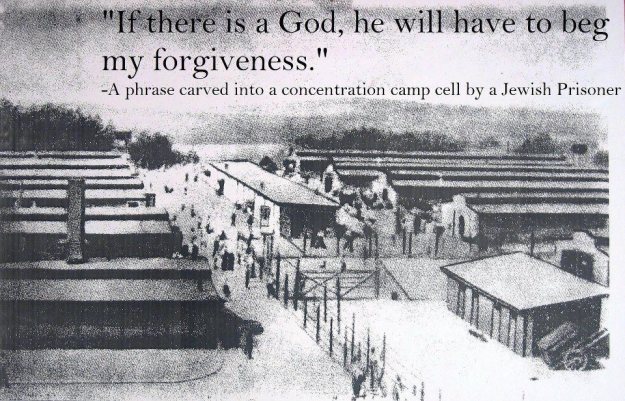You already know what happened there. For some a visit is a pilgrimage, a visit to the place their relatives or ancestors were killed; for others a place of contemplation, to reflect on the things man can do to man, and for others Auschwitz is a lesson in history – one which we hope has been learned, but fear not well enough.
The museum site in Oświęcim is approximately 2.5 hours’ drive from Kamionka Wielka. The drive there and back can be completed in part on different roads (Route 75/A4 and Route 28 – timing within roughly ten minutes of each other).
The museum is open all year round, seven days a week, except for:
– January 1,
– December 25, and
– Easter Sunday
And access is restricted (entry may not even be possible) during memorial services and the visits of dignitaries and:
– Holocaust Memorial Day (27 January)
– The day of the March of the Living, when Jews from around the World join in a two-week educational programme with its highlight the joining of Jews, old and young, in a march of the living.
– St Maximillian’s Day (August 14) which marks the death of the friar who gave himself to die in place of another prisoner in Auschwitz.
The Museum is open during the following hours:
- 08:00 – 15:00 December to February
- 08:00 – 16:00 March, November
- 08:00 – 17:00 April, October
- 08:00 – 18:00 May, September
- 08:00 – 19:00 June, July, August
Admission is free of charge, but between April and October it is mandatory to join a guided tour – cost 25zl each on a tour in Polish, 40zl for tours in other languages – if you arrive between 10:00 and 15:00. The tour, run by the museum, includes the Auschwitz I and Auschwitz II-Birkenau sites with a guide, headphone rental and transportation (minibus shuttle) to and from Birkenau. With your receipt, you will also be able to view the film shot just after the liberation of Auschwitz (15 minutes, English on the hour and Polish on the half hour) in the main building which also houses a café, bookstore and toilets.
Expect the tour to last roughly 4 hours.
The museum recommends a minimum age of 14 years for visitors.
It’s worth pointing out that the camps are kept as original as possible, with little provision for the disabled (the disabled were one of the groups the Nazis exterminated in camps like Birkenau). Wheelchairs are permitted, but will be hard work on cobbles and rough paths, and entry to a number of buildings using a chair will not be possible due to stairs, steps and narrow corridors. Pushchairs are not permitted in some of the museum buildings.
For those who can’t stand for 3.5 hours – there’s some sitting-down time on the shuttle between the camps, there’s a café in the main museum building, and you’ll find various places you can have a seat as you go. But watch out – many people every year lose sight of their guides … you’ll still hear his or her voice over your headset, but they’ll have moved on!
Tour times
Individual or personal group tours are provided but must be reserved (preferably in advance) individually. Date, time and language are all selected at the time of bookng. Cost 250zl per tour for up to 10 visitors, 300zl per tour for 11-30 visitors.
To book a personal tour, this is where you start http://en.auschwitz.org/z/index.php?option=com_virtuemart&page=shop.browse&category_id=1&Itemid=1
Timings for Spring – Autumn museum-led open group tours are as follows. The schedule for group tours over the winter will be published later – probably in October.
Groups in English:
April and October: every hour between 10:30 and 15:30
May-September: every 30 minutes between 09:30 and 15:30
Groups in Polish:
April-June, October: every hour between 10:00 and 15:00
July-September: every 30 minutes between 09:30 and 15:00
Groups in German and French:
April, October: 11:45
May-September: 10:45, 12:15 and 13:45
Groups in Italian and Spanish:
April, October: 12:00
May-September: 10:30, 12:00 and 13:30 (Italian) / 10:00, 12:00 and 14:30 (Spanish)
Groups in Czech and Slovak
July and August: 10:00, 12:00 and 14:00 (Czech) / 11:00 and 13:00 (Slovak)
If requested, groups will also be created with the guide speaking Russian, Swedish, Serbian, Croatian, Japanese or Hungarian.
From 1 November 2013 to 31 March 2014 the groups will be organized in Polish, English, French, German, Italian and Spanish
• Polish: 11.00 a.m., 1.30 p.m. (except for 27.01.2014)
• English: 10.30 a.m., 11.30 a.m., 12.30 p.m., 1.20 p.m. (except for 27.01.2014)
• French: 12.30 p.m. (except for 27.01.2014)
• German: 12.30 p.m. (except for 27.01.2014)
• Italian: 12.30 p.m. (except for 27.01.2014)
• Spanish: 12.30 p.m. (except for 27.01.2014)
NB: during these months joining a tour is entirely optional, regardless of arrival time.
Fee for guided tours:
Polish-language: 25 zloty (reduced fee: 20 zloty)
Other languages: 40 zloty (reduced fee: 30 zloty)
Tour tickets for individual visitors can be purchased only at the museum.
Visitors ask if it is possible or wise to combine visits to the museum with other activities. Many people are deeply affected by what they see at Auschwitz. Tours from Kraków offer the chance to combine a visit to the museum with Wieliczka Salt Mine – that is a long day, and the mine is tiring on top of an emotional morning at Auschwitz. For those who stay in Kraków, public transport is available to both Oświęcim and Wieliczka. A morning at Wieliczka can be combined by tram with a stop at the Schindler factory and museum of the occupation.
Getting to Auschwitz from Kraków
Oświęcim is clearly signposted from the E40, between Katowice and Kraków. There is parking at both camps, and a shuttle bus between Auschwitz I and Auschwitz II Birkenau.
For anyone staying in Kraków, or wanting to visit Auschwitz before coming on to KW24, there are a number of tour companies operating out of Kraków, among them:
http://Krakówshuttle.com/Kraków-tours/auschwitz-birkenau-tour/
http://www.Krakówtours.co.uk/auschwitz.htm
Do some checking before you book.
For example, a full tour by Kraków Tours starts with collection from an agreed point, eg hotel, using a day van and take a maximum of six passengers, who get, or get to see: the documentary film “The liberation of Auschwitz” shown en route; a short introduction at the museum and a guide book; at least 2.5 hours at Auschwitz I to allow visits to the permanent and national exhibitions; their own transfer to Auschwitz II – Birkenau, via the original Judenramp where the first half million prisoners were unloaded from bulk transports and the church in the former SS barracks where they explain the significance of the stained glass windows, etc. In Birkenau, they offer a guided walk and time to reflect on what you have seen and heard, before returning to Kraków via the former theatre/warehouse used to store the pellets that made the cyclone B gas, the cross that caused so much controversy when erected for the visit of Pope John Paul II, the house where first commandant, SS–Obersturmbannführer Rudolf Höss lived, then the mass grave for 470 prisoners who died just before and just after the liberation. Finally, on the way out of Oświęcim, the former SS brothel (Freudenabteilung) and the former SS barracks.
Some other “tours” are simply collect and delivers – pick you up, drop you at the museum, wait for you to complete the museum’s own guided tour and return you to Kraków. Other companies offer something in between.
Alternatively, for maximum flexibility and minimum cost, take a bus or minibus from the main station in Kraków to Oświęcim and get off at the museum stop. Buses run from the bus station next to the main rail station, and you can buy a ticket from the driver. Using the buses means you are not tied to the tour’s departure time from the museum and can spend as long at the camps as you wish. Don’t wait until the last bus, though – you may find it’s jam-packed full and you have to stand in the aisle all the way back to Kraków.
Work on the first bus from Krakow being about 07:00 and the last bus back about 19:00, with buses or minibuses about every 20 minutes.
For completeness, trains from Kraków to Oświęcim are less frequent, slower, and stop some distance from the museum. However some people prefer them because they are less busy, they can drink a coffee, and the station is in any event only 15 minutes’ walk or a short taxi ride from the museum,
Taxis are also an option – especially if you wanted to go to Auschwitz very early in the morning, or direct from JPII Airport. You can fix a price for the driver to pick you up at an agreed time for both the outward and return journeys.
Auschwitz facts
Occupying German forces built the original camp at Auschwitz as a labour camp for Polish political prisoners in 1940. It opened in June of that year and was soon expanded so that by 1942 it contained a total of 3 main camps and 36 sub-camps.
Birkenau, officially Auschwitz II, was operational by late 1941. As the main site of killings, it contains gas chambers and crematoria with a capacity of 2,000 per day. It is believed that total deaths were at a rate of 6,000 per day by 1944.
Auschwitz III housed slave-labour for the nearby I G Farben plant.
No exact figures are available, but estimates put the total number of people who died at Auschwitz at over 1.25 million*, of whom roughly 1 million were Jewish. About 100,000 inmates survived. Other groups murdered at Auschwitz included Polish political prisoners, Soviet prisoners of war, gypsies, homosexuals, people with disabilities and prisoners of conscience or religious faith.
Following the liberation of the camp by Soviet soldiers on 27th January 1945, a total of some 7,000 staff and guards were identified. Only 750 were prosecuted.
*The current estimated population of the Kraków metropolitan area is 1.4 million

